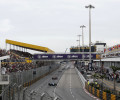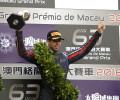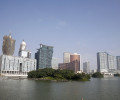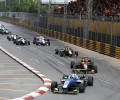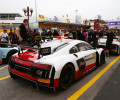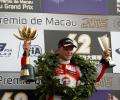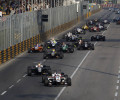Auto #16 - Street fighting years
It started life over 60 years ago as an event for GT cars before becoming the F3 race that all junior drivers want to win – and today the Macau Grand Prix is as important as ever
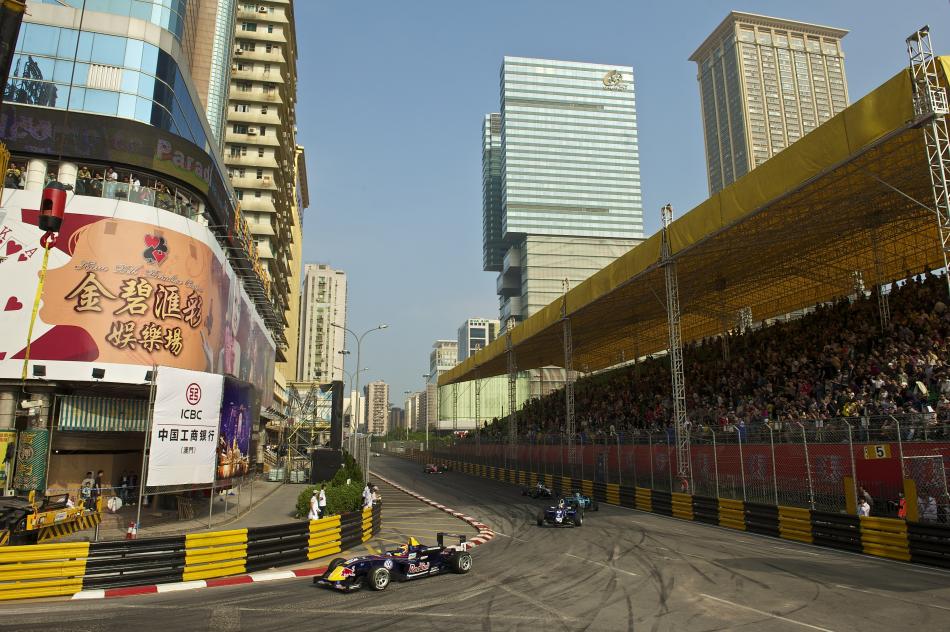
The Macau Grand Prix is the jewel in the crown of Formula 3, and arguably the most important single event anywhere in the world for drivers in the junior single-seater ranks. Also now carrying the title of FIA F3 World Cup, it’s the prestige race that brings together the leading contenders from the FIA Formula 3 European Championship, the All-Japan Formula 3 Championship, plus a smattering of ‘wildcard’ drivers from other series. The November classic is the one they all want to win.
But it hasn’t always been this way. Back in 1954, the first Macau Grand Prix was held on a circuit layout almost identical to that used today, although the surroundings have changed significantly in past decades, with a proliferation of high-rise hotels and casinos, as well as reclaimed land, meaning that part of the circuit is considerably further from the South China Sea than it used to be.
That first event, 62 years ago, was held for mainly local drivers in production GT cars, with Eddie Carvalho – his name betraying Macau’s former status as Portugal’s Chinese enclave, in the same way as Hong Kong belonged to the British – taking the win in a humble Triumph TR2. Two years later, in 1956, a Sumatra-born entrepreneur by the name of Teddy Yip made his first Macau GP start in a Jaguar XK120, and the ball started rolling on building Macau into the event it is today.
The race switched to single-seaters in 1961, initially mainly Formula Junior cars, before attracting more potent machinery from drivers visiting from Australia plus other areas of South East Asia.
The open Formula Libre era ended when Formula Atlantic rules were introduced in 1974. This category, popular in Australia, Japan, the US and the UK, featured cars powered by the high-revving 1600cc Ford Cosworth BDA engine. By now Yip was a team owner, and his Theodore Racing squad would bring over international drivers to raise the profile of the event. In Yip’s cars, Formula One driver Vern Schuppan and European Formula 2 Championship star Geoff Lees won the Macau GP, while the rival Bob Harper Racing brought over new F1 sensation Riccardo Patrese for two wins.
During this era the English Motor Race Consultants company was hired to coordinate the entry. MRC boss Barry Bland, whose secretary was a friend of Yip’s, played a big role in bringing the increasingly international field together, but with the Atlantic class fading worldwide a new concept was required…
PARTY ATMOSPHERE
For 1983, Bland arranged the first grid of Formula 3 cars to make the trip to Macau, among them the newly-crowned British F3 champion: Ayrton Senna da Silva. The Brazilian sensation stayed with the West Surrey Racing team that had run him throughout the season, but along with Eddie Jordan Racing’s Martin Brundle and Roberto Guerrero he was sponsored by Theodore Racing. Senna dominated the race.
Yip, without an F3 squad (he was concentrating on F1 and Indycars), had now turned into Macau patron rather than team principal. He would back drivers through to 1992, 11 years before his death at the age of 96. Yip’s hospitality was legendary, and his parties became part of the very fabric of the race. His son Teddy Yip Jr, who revived the Theodore Racing name for the 2013 Macau Grand Prix to commemorate the 30th anniversary of Senna’s win, says: “I was unfortunately too young to be involved in much of the fun but my father certainly knew how to enjoy racing on and off the track! Let’s just say he knew how to throw a party and make the most of having like-minded people around him.”
One of the victims of that party atmosphere was Senna. Along with Guerrero and Pierluigi Martini, he arrived straight from a tryout for the Brabham Formula One team at Paul Ricard. Fighting off the jetlag, he completed just three laps on the first qualifying day before hitting the wall, although that was still good enough for third fastest. The following day he put it on pole, and then went out for a few drinks… The excess vodka (West Surrey boss Dick Bennetts believes some of the other drivers spiked his drink) meant Senna was still feeling groggy for the first heat, but he dominated both races to become Macau’s first F3 winner.
Macau had truly arrived on the international scene, with drivers from all the national F3 series in Europe and Japan. One particularly famous race was 1990, which brought together British champion Mika Häkkinen and German title winner Michael Schumacher. These days, the first race acts a qualification race, forming the grid for the final. Back then, the Macau GP was run as a football-style aggregate of two heats, with each driver’s combined finishing times forming the final result.
Häkkinen had won the first heat, and all he had to do was finish right behind Schumacher to claim the overall honours. But the Finn couldn’t help trying to pass at the flat-out Mandarin Oriental kink. They collided, Häkkinen was in the barriers, and Schumacher continued to victory to begin a rivalry that would enthral F1 for the next decade.
Even now, it is regarded as a race that drivers have to contest to impress those in F1. “It’s always difficult to remain relevant to a new generation in a rapidly evolving sport, but it’s great to see the Macau Grand Prix held in such high regard today,” says Yip Jr, whose Theodore Racing revival backed Prema Powerteam drivers Alex Lynn and Felix Rosenqvist to victory in 2013 and ’15 respectively.
“It’s a race that all drivers want to win and is still seen as one of the ultimate challenges in motor sport. It’s about speed, skill and accuracy, lap after lap, and it also takes that little bit of magic to win. It doesn’t matter if you are an F1 driver, IndyCar driver or junior driver, if you haven’t won the Macau Grand Prix you want to give it a go. I read a Red Bull article which quoted Daniel Ricciardo as saying, ‘Macau is the ultimate street circuit. Just hearing the name gets me excited. It’s big, it’s ballsy. It’s Monaco but twice the length and even crazier. Commitment is the key to a successful weekend.’”
It’s also an event the team personnel love visiting. Carlin team boss Trevor Carlin, a Macau regular since the 1980s, says: “You do the whole season to earn the right to work 16 hours a day in Macau and party for eight hours. The guys work really, really hard and still manage to go out and have fun and be back at work the next morning fully functioning. And if you’re a professional guy who loves motor racing, one of the biggest challenges is repairing a car in a timeframe no one thinks is physically possible. Miracles happen in Macau – and the adrenalin crushes any alcohol left in the system!
“Macau is literally bonkers. I don’t think there’s a challenge like it in motor sport. The track is perfect for F3 – it’s sensational to drive there. You couldn’t do it in a GP2 car; it’s too big and you wouldn’t be able to push it so hard.”
And it’s not just the Grand Prix. The Macau Guia touring car race has been a traditional support act since the 1970s, the Motorcycle Grand Prix thrills crowds, while the new FIA GT World Cup joined the timetable in 2015. It’s a festival of motor racing.
“The Macau Grand Prix is incredibly important to me and my family for many reasons,” concludes Yip Jr. “My father was instrumental in organising the inaugural Macau F3 Grand Prix and also passionate about putting Macau on the world map. As the only motor racing team to originate from Macau we consider ourselves ‘Theodore Racing’ as a local team and the Macau Grand Prix as our home race. It truly is the highlight of our race season and every year I return with a renewed passion to win. This year is no exception.”
And that passion for the event has well and truly extended throughout the motor sport world.
Click here to read Auto #16 Magazine online.

 Facebook
Facebook Twitter
Twitter